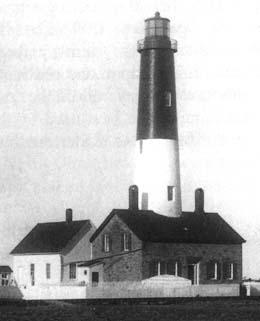Just before dawn on September 21, 1868, 26 S’Klallam Indians, led by a man known locally as Lame Jack (or Nu-mah the Bad by his tribesmen), conduct a raid on a party of 18 Tsimshian Indians camped on New Dungeness Spit. The Tsimshians were traveling by dugout canoe to Fort Simpson near Prince Rupert, British Columbia, from Puyallup where they had been harvesting hops. They had decided to wait for daylight and for a dense fog to lift before making the 22-mile journey north across the Strait of Juan de Fuca to Vancouver Island. Within a short period of time, the S'Klallam massacre 17 Tsimshian Indians, but one woman, wounded and left for dead, escapes to tell the story. It is the last major bloodletting among Indians in this area.
The S’Klallam’s raid was in retaliation for the Tsimshians stealing one of Lame Jack’s wives and his son some nine months earlier. Raiding other tribes for slaves was a common practice of Coastal Indians and a payment could be made to remedy the wrong. As no compensation was made to Lame Jack or to the S’Klallam tribe, revenge was seen as the only means to right the wrong done to a tribal member.
The S’Klallam raiders crept up on the Tsimshian’s camp and collapsed their canvas shelter, trapping the occupants inside. During the brief skirmish, the raiders killed 17 Tsimshians, 10 men, 5 women, and 2 children, using clubs, knives, and guns. The S’Klallams suffered one casualty, Lame Jack. The raiders then set about pillaging the camp and taking souvenirs. Years later, Joe Johnson, a participant in the Dungeness Massacre, said that Lame Jack was trying to abscond from the spit with a small leather-covered trunk containing several gold coins, silver jewelry, and trinkets, when he was shot and killed by Slay-itst, a fellow S’Klallam. Apparently Lame Jack’s accomplices despised him and were waiting for such an opportunity. His body was left on the spit along with the Tsimshian victims.
There was one survivor of the massacre, a 17-year-old pregnant woman named Nusee-chus (or Chichtaalth) who had been clubbed and knifed numerous times, stripped of her jewelry, and left for dead. Soon after the killing frenzy, the S’Klallams left the spit and Nusee-chus was able to make her way to the New Dungeness Lighthouse.
Lighthouse keeper Henry Blake, who may have witnessed the massacre through a telescope from the tower, gave the wounded woman shelter in the lighthouse. Some of the S’Klallam raiders tracked Nusee-chus to the lighthouse and demanded her return. Blake, feeling secure inside the fireproof brick lighthouse, refused their demand and the Indians went away. Later that day, Henry Blake took Nusee-chus to the home of Benjamin Rainey in Dungeness, whose wife was from the Tsimshian tribe, to convalesce.
Local settlers gathered up the Tsimshian’s remaining property and buried the murdered victims on what has been named Graveyard Spit. After about six weeks, Nusee-chus recovered her health and was sent to Victoria, B.C. where she learned that her husband had died of smallpox two weeks previous. From there, she was sent home to Fort Simpson aboard the Hudson's Bay Company steamer Otter, together with most of the recovered loot. The Bureau of Indian Affairs also sent along money and gifts (called mamoke-kloshe-tumtums), in an effort to make peace between the Tsimshians and the S’Klallams. U. S. Commissioner James G. Swan (1818-1900) later reported, “The Indians were all satisfied.”
With the assistance of S’Klallam tribal chief, Chetzemoka (ca. 1808-1888), called by settlers Duke of York, all the S’Klallams involved in the massacre were identified and arrested by Indian Agent Charles S. King and U. S. Commissioner James Swan. The S’Klallam men were transported to the Skokomish Indian Reservation where they were shackled to balls and chains, and sentenced to hard labor digging stumps. Through the intercession of Chief Duke of York, most of the prisoners were released after about four months and the rest a short time later. The government decided the murders had been a dispute between tribes and therefore not under the jurisdiction of the Bureau of Indian Affairs.
Approximately two years after being abducted, Lame Jack’s wife and son successfully escaped from the Tsimshians and made it back to the S’Klallam tribe.
According to local history, about 1920, a Tsimshian Indian landed on New Dungeness Spit near the lighthouse in a dugout canoe. Edward A. Brooks, the lighthouse keeper at New Dungeness from 1902 to 1925, met him and they talked about the Dungeness Massacre. The man revealed to Brooks that he was the baby born to the Tsimshian woman rescued by Henry Blake in 1868. Brooks was delighted and told the man that Henry Blake’s son, Richard, present during the incident, lived nearby in Dungeness. The man promised to visit Richard Blake, but he never did. He apparently paddled back to Vancouver Island instead, and never returned to New Dungeness.

